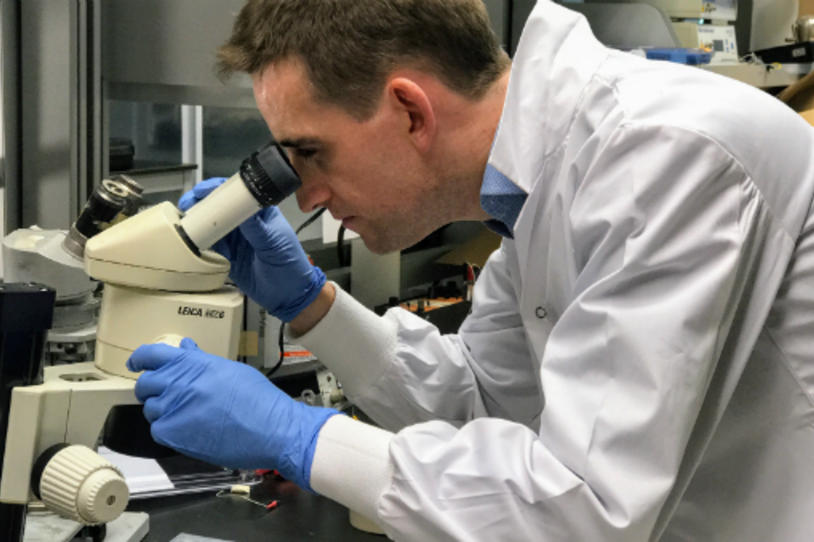
An artificial intelligence method called "deep learning" can help computers see details in living cells without using methods that can be harmful to the cells, according to a Michael J. Fox Foundation-funded study published this month in the journal Cell. This method may be useful to scientists looking for new ways to diagnose and treat Parkinson's disease and other neurodegenerative diseases, according to lead researcher Steven Finkbeiner, MD, PhD, a director and senior investigator at the Gladstone Institutes.
Because the human eye cannot distinguish individual cells, even with a microscope, researchers have had to use dyes and staining methods to make cell characteristics visible, a process called labeling. However the chemicals used in this process can be lethal to the cells.
Almost a decade ago, Finkbeiner and colleagues invented a robotic microscope that can track individual cells. They also developed computational methods to analyze the large amount of data generated by the microscope. Google approached Finkbeiner with an offer to help customize a model for deep learning, in which machines can learn from data and make decisions.
In the new study, the scientists showed a computer two sets of images of the same cells -- one unlabeled and one labeled. They repeated the process millions of times. Then, they showed the computer an unlabeled image it had never seen, and found it could accurately predict where the label belongs.
The researchers found the computer program could identify whether a cell is alive or dead correctly 98 percent of the time, compared with an 80 percent accuracy rate for the human eye. The next step was to train the program to accurately predict the location of the cell's nucleus. They trained it to distinguish nerve cells, or neurons, from other types of cells and to tell the difference between two types of extensions on neurons, called axons and dendrites.
"This approach has the potential to revolutionize biomedical research," said Margaret Sutherland, PhD, program director at the National Institute of Neurological Disorders and Stroke, part of the National Institutes of Health (NIH). "Researchers are now generating extraordinary amounts of data. For neuroscientists, this means that training machines to help analyze this information can help speed up our understanding of how the cells of the brain are put together and in applications related to drug development."
Finkbeiner says the new method has important implications for research into Parkinson's and other neurodegenerative diseases. "We still don't understand the exact cause of the disease for 90 percent of these patients," he said. "What's more, we don't even know if all patients have the same cause, or if we could classify the diseases into different types. Deep learning tools could help us find answers to these questions, which have huge implications on everything from how we study the disease to the way we conduct clinical trials."
Other funders of the study were Google, the NIH, the Taube/Koret Center for Neurodegenerative Disease Research at Gladstone and the ALS Association's Neuro Collaborative.
Learn more about the study here.
____
Celia Vimont is a freelance writer.